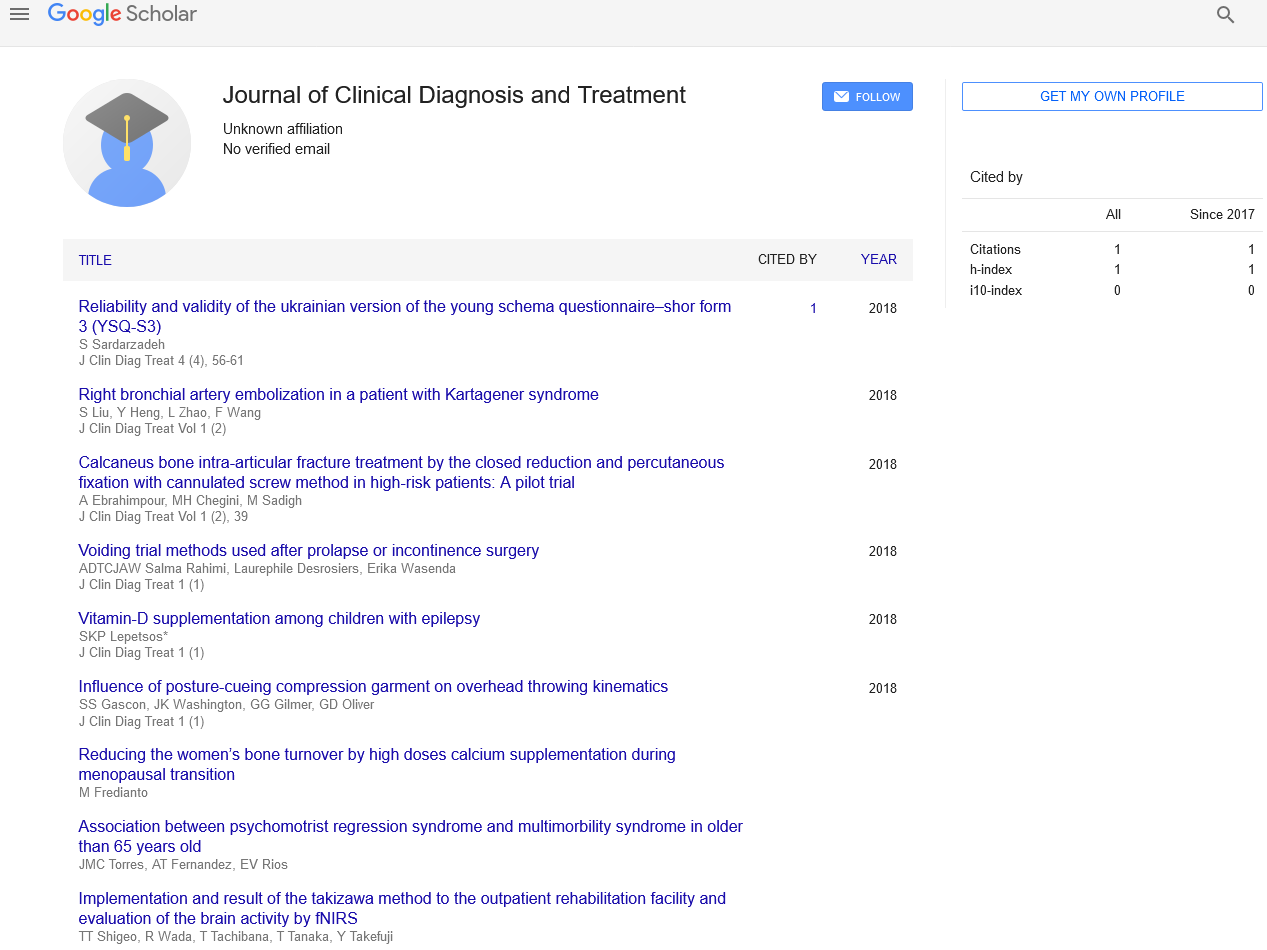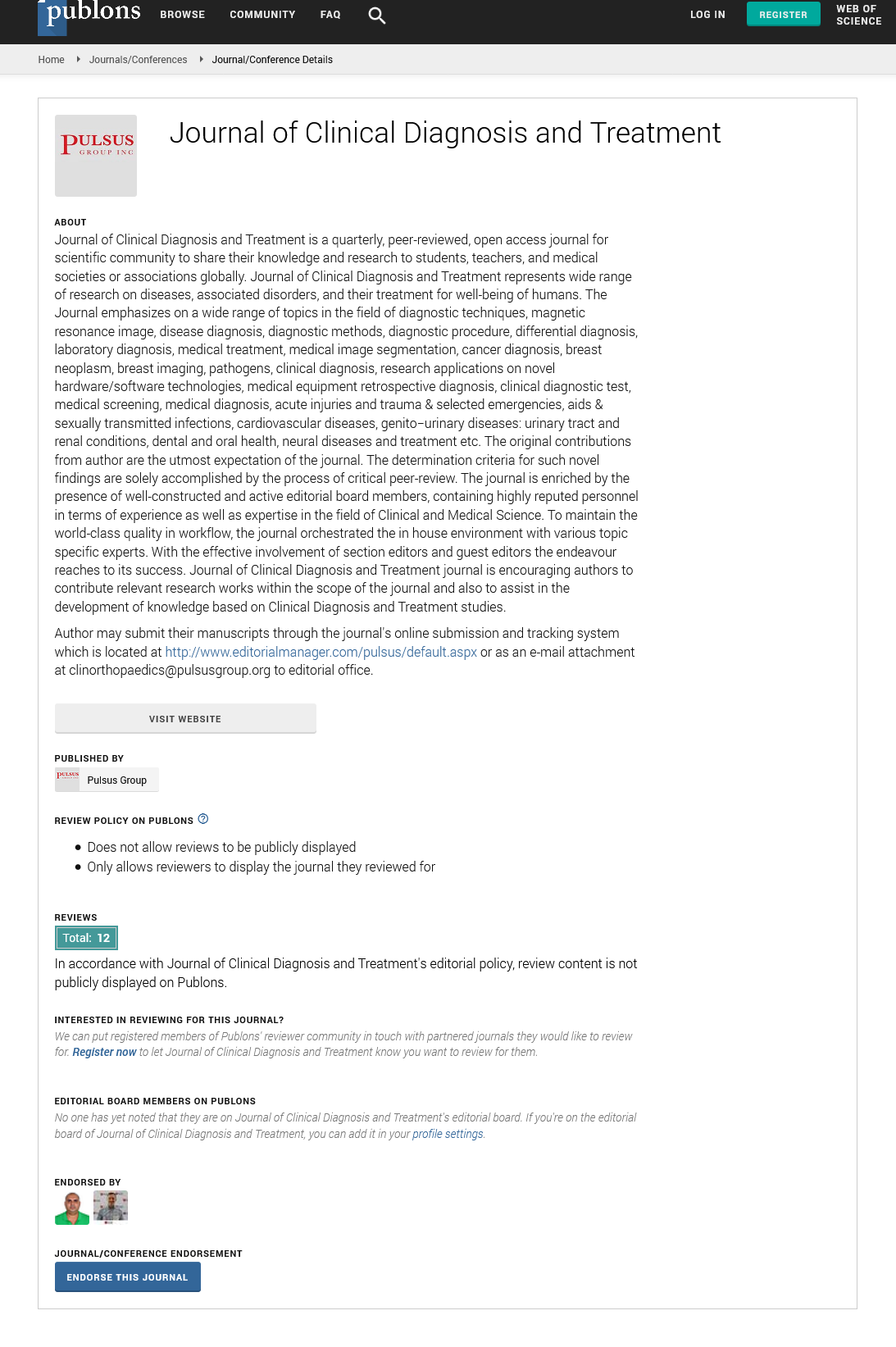Daily routines using volumetric automated full-field breast ultrasounds Are we there yet?
Received: 03-Sep-2022, Manuscript No. puljcdt-22-5583; Editor assigned: 05-Sep-2022, Pre QC No. puljcdt-22-5583(PQ); Accepted Date: Sep 23, 2022; Reviewed: 15-Sep-2022 QC No. puljcdt-22-5583(Q); Revised: 21-Sep-2022, Manuscript No. puljcdt-22-5583(R); Published: 28-Sep-2022, DOI: 10.37532/puljcdt.22.4(5).11-12
Citation: Robin C. Daily routines using volumetric automated full-field breast ultrasounds, are we there yet? J clin. diagn. Treat. 2022; 4(5):11-12
This open-access article is distributed under the terms of the Creative Commons Attribution Non-Commercial License (CC BY-NC) (http://creativecommons.org/licenses/by-nc/4.0/), which permits reuse, distribution and reproduction of the article, provided that the original work is properly cited and the reuse is restricted to noncommercial purposes. For commercial reuse, contact reprints@pulsus.com
Abstract
There is a growing trend to replace Handheld Ultrasonography (HHUS) with Automated Fullfield Breast Ultrasound (AFBUS), at least as a screening strategy for specific patient groups, but is the most recent iteration of this diagnostic technique really suitable for routine use? For the evaluation of women with clinically or radiologically suspect breast lesions, breast ultrasonography is a recognized and trustworthy diagnostic technique
Key Words
Ultrasonography; Volumetric data; Axillary lymph nodes; Breast tissue
Introduction
Although attempts to automate breast ultrasonography date back to 1979, significant progress in this area has only recently been made possible by the development of new high frequency probes and potent computers that can handle large amounts of data collection and challenging picture processing (artifact removal). An emerging technology called an automatic full-field volumetric breast ultrasound scanner (AFFBUS) was developed to get over the problem of dense breast tissue and to provide a three-dimensional image of the breast. Volumetric data acquisition is used to provide automatic ultrasound imaging acquisition of the breasts. The transducer with gel attached to it is brought into contact with the breast using one of the methods now in use by physically pushing a stiff pivoted stationary frame.
Parts scanning station
1. Watch station
2. Scanning station
Volumetric data acquisition is used to provide automatic ultrasound imaging acquisition of the breasts. One technique currently in use involves manually pushing a rigid pivoting fixed frame into position so that the transducer with gel attached to it contacts the breast and an ideal image is obtained.
Thin tomographic slices are created after analysis and conversion of the obtained data. When a lesion is visualised, it is possible to better explain how it affects nearby structures by using a virtual probe to acquire numerous different scan planes. You have the option of watching in cine mode or with standard greyscale visuals. Since it was first utilised as a vital supplement to mammography (MG) roughly 20 years ago, ultrasonography (US) has seen a notable improvement in its diagnostic efficacy. While US may separately detect the sonographic characteristics of the breast tissue in a manner of contiguous slices, a standard 2-dimensional MG can only detect a summation of the X-ray opacity of the full thickness of breast tissue over the entire breast. The original purpose of automated full-field breast US (AFBUS) scanners was to effectively evaluate the breast from top to bottom. Basically, there are two types of AFBUS scanners: prone and supine.
The complete breast's 3D data volume is reconstructed using a succession of B-mode images acquired by new volumetric scanners. Usually, it takes several scans to finish the job. These data can be transmitted to an additional workstation for analysis. The main benefit of using this imaging technique is eliminating investigator dependency and inconsistent documentation that could happen while doing a handheld US scan. Other advantages include gathering 3D data that enables multiplanar reconstruction, with coronal view being the one that cannot be evaluated in HHUS but may aid in diagnosis according to recent research
Benefits
1. A clear illustration of breast anatomy
2. Reproducible images as a result of more accurate lesion localization
3. Information about CAD of breast lesions is provided.
4. better breast anatomy explanations
5. Reading proficiency improved.
Although existing data is largely contradictory and depends on the type of employed technology, automation of breast ultrasonography is thought to save examination time. The patients tolerate new volumetric scanners well. According to reports, sensitivity and specificity are identical to HHUS. On the other hand, automated ultrasound denies the radiologist the chance to have direct patient contact and, as a result, the opportunity to take a holistic approach, do palpation, colour Doppler, elastography, contrast enhanced US, and examine the axillary lymph nodes. Despite technological advancements, automated breast sonography can still suffer from a variety of issues, including peripheral gaps, patient mobility, and artefacts in the fusion zones, to mention a few. HHUS has some technical flaws as well, but many of them—like motion artifacts—can be quickly detected and corrected for or avoided altogether. Although its deployment in some circumstances (for instance, in remote places suffering from a dearth of radiologists) is viable but requires further investigation and evaluation, automated breast ultrasonography cannot replace HHUS.






